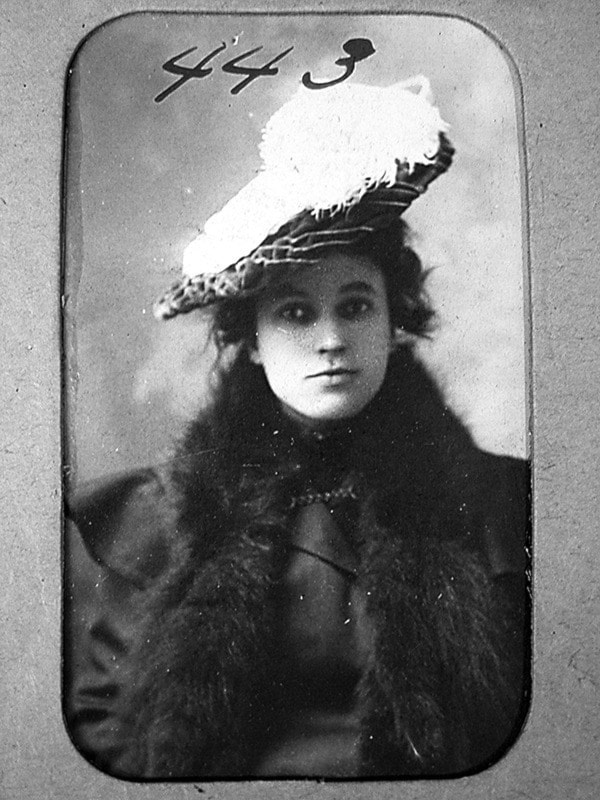Frantic, disheveled and more than a little distraught, an Asian man burst into the Ladysmith police station needing help.
Immediately.
Earlier that evening he had wrestled a knife away from a belligerent customer who was holding the blade to his boss's throat.
Now the customer was back. And this time he was packing a shotgun.
Police rushed to the business in the 300 block of Baden-Powell. The proprietor met them at the door telling them they were not needed. Not believing her, they pushed their way inside and found an inebriated man sitting there, cradling the gun.
They arrested John Dougall for discharging a firearm.
Such was life in 1911 at Big Lou's, one of Ladysmith's "houses of ill-fame."
The above anecdote — relayed by local writer and historian Ed Nicholson straight out of the pages of a 1911 police report in the Chronicle — is one of the most colourful, direct accounts uncovered by Nanaimo historian Aimee Greenaway during her research into the brothels that were a quiet fact of life in the early days of Vancouver Island communities.
If it hasn't become clear yet, Louise "Big Lou" Hilgard, an Australian immigrant in her 30s, was the madam for a handful of prostitutes providing services to the men of Ladysmith back in its heyday as a coal port.
Greenaway, curator of the Nanaimo Museum, and Patrick Dunae, a history professor at UVic, spoke about the Bordellos of Ladysmith and Vancouver Island April 21 at an event hosted by the Ladysmith and District Historical Society.
Working together and separately, the pair has pieced together an intriguing picture of an industry that seemingly flourished behind the scenes on Vancouver Island a century ago.
Historical research into the world's oldest profession is a tricky proposition. Big Lou wasn't exactly buying a half-page ad in the Chronicle to promote her services alongside the 1911 versions of Pharmasave and the 49th Parallel.
Dunae and Greenaway used a unique profiling system to pinpoint their suspects. First they checked property and census records looking for women older than 30 who were either listed as property owners, or heads of their household — something somewhat unusual in and of itself in that era.
Then they looked at the other residents of the house: Women? In their late teens or 20s? Unrelated to the woman in charge?
Next, was there a man listed as a resident? Is he the only one, and is his profession listed as a cook?
Finally, you cross-reference any of those names with police records for being charged as a keeper of, or inmate in, a house of ill-repute?
You've just discovered the picture a census of that era would paint of a bordello.
Their work was illegal, subject to fines, and the target of regular campaigns by social crusaders of their era. But they continued to thrive for at least 30 years, often with the tacit and sometime complicit support of local authorities.
For example, Vancouver Island merchants were doing big business selling supplies to prospectors rushing off to the Klondike. Why give them a reason to shop in Vancouver or Seattle instead?
The women would report for post-raid mug shots dressed in finery and pay their fines with a smile, writing it off as the cost of doing business.
According to Dunae, there were 300 known prostitutes working Victoria at the turn of the century, most of them immigrants from Europe or the U.S. The numbers elsewhere on the island are uncertain, but Greenaway has clearly established Nanaimo had a significant red light district centred on a neighbourhood just north of the Bastion Street Bridge.
Their research only very recently turned to Ladysmith.
That's because Big Lou and her brood popped off the page.
Greenaway said most women hid their true profession on the census behind euphemisms like hatmaker and seamstress. Residents of the Baden-Powell Bordello are the only people she's discovered in all her research actually listed explicitly as prostitutes.
Her research started out as an attempt to tackle a grittier aspect of Nanaimo folklore. It blossomed into something more. She has made it her business to find out what became of the real people behind these shadowy census reports. She discovered they trod no typical path.
Nanaimo madam Minnie Clayton, retired as a wealthy property owner, with holdings in Nanaimo, Vancouver, the Interior and California.One of her charges, Marguerite Morris, was murdered at the hands of a mentally ill client. Another, Catherine "Kitty" Burns, retired with her husband to a home on Buller Street.
"It was really important to me," Greenaway said. "I felt like I was giving a voice to people that history has left behind."
It's not clear how many other houses of ill-repute were competing with Big Lou for the custom of the sailors, coal miners and more well-heeled gentlemen of early Ladysmith. It is clear she was not alone.
A report by Ladysmith historian Kit Willmot in Ladysmith: 100 Years, refers to one in a cafe on First Avenue, another on a boathouse near the smelter, and a third operated by the Chinese near Stevenson Street.
Nor is it clear exactly what ended their run. The Depression and public pressure certainly may have played its part, but Greenaway has yet to find evidence in the public record. The last official references to Nanaimo's red light district are from 1931.
But for a lengthy stretch, there was money to be made on Vancouver Island and Ladysmith was no exception.
Police records show Big Lou paid the fine for Dougall's shotgun shenanigans at her establishment located at either ?
One is left to conclude he was a good customer and that was considered part of the cost of doing business.
